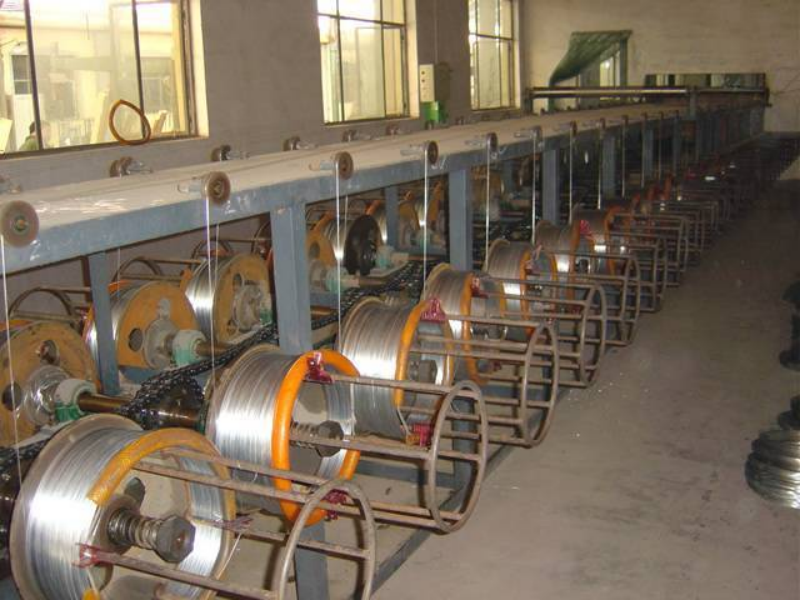
- Mobile Phone
- +8613931874955
- sales@cntcmetal.com
Spacers to Enhance Structural Integrity of Reinforcing Mesh in Construction Projects
The Importance of Spacers for Reinforcing Mesh in Construction
In the construction industry, the quality and durability of structures are largely dependent on the materials and techniques used during the building process. One critical element in reinforced concrete structures is the use of reinforcing mesh, often made from steel bars or wire, which serves to increase tensile strength and improve the overall integrity of the concrete. To ensure that this mesh performs optimally, the utilization of spacers is essential.
Spacers, in this context, are devices that hold reinforcing mesh in place within reinforced concrete slabs, walls, and other structural elements. They are crucial for maintaining the correct cover thickness, which is the distance between the surface of the concrete and the nearest reinforcing steel. Maintaining this cover is vital for several reasons it protects the steel from corrosion, ensures proper bonding between the concrete and the reinforcement, and helps prevent cracking.
Types of Spacers
There are various types of spacers available in the market, each designed for specific applications. Depending on the construction requirements, spacers can be made from different materials such as plastic, metal, or concrete.
1. Plastic Spacers Made from durable, weather-resistant plastic, these spacers are lightweight and easy to handle. They are commonly used for residential projects as they effectively support reinforcing mesh while being resistant to environmental degradation.
2. Metal Spacers Typically made from galvanized steel, metal spacers offer superior strength and durability compared to their plastic counterparts. They are often used in heavy-duty construction projects where high-load capacities are required.
3. Concrete Spacers This type of spacer is often used in precast concrete applications. They are manufactured from concrete and blend seamlessly with the structural elements, providing stability without the risk of corrosion.
spacers for reinforcing mesh

Benefits of Using Spacers
The use of spacers in reinforcing mesh offers numerous benefits to construction projects
1. Consistency in Spacing Spacers provide uniformity in the placement of the mesh, ensuring that it remains in the desired position during the concrete pouring process. This consistency leads to a more reliable and predictable structural outcome.
2. Improved Structural Integrity By securely holding the mesh in place, spacers help achieve the required concrete cover, which enhances the durability of the structure. This resistance to environmental factors such as moisture and temperature variations is crucial for long-term performance.
3. Cost-Effectiveness While some may view spacers as an added cost, their use can ultimately lead to savings by reducing the likelihood of defects and failures. These failures can lead to costly repairs, downtime, and safety hazards, making the initial investment in quality spacers worthwhile.
4. Ease of Installation Spacers are designed to be user-friendly, allowing for quick and efficient installation. This is particularly important on busy construction sites, where time is of the essence.
Conclusion
In summary, spacers play a vital role in the application of reinforcing mesh within concrete structures. They not only ensure the correct placement and cover of the mesh but also enhance the overall integrity and longevity of the construction. Whether utilizing plastic, metal, or concrete spacers, the importance of using these devices cannot be overstated. By investing in high-quality spacers and adhering to best practices in their application, construction professionals can significantly improve the performance of their structures, ensuring safety and durability for years to come. As the construction industry continues to evolve, the use of spacers will remain a fundamental aspect of creating robust and resilient buildings that can withstand the tests of time and nature.
share:
-
Your Source for Concrete Wall Ties and Masonry AccessoriesNewsJul.10,2025
-
Unlocking the Power of Iron Wire for Every ProjectNewsJul.10,2025
-
Explore Advanced Chain Wire and Stainless Steel Mesh FencingNewsJul.10,2025
-
Discover the Benefits of Annealed Wire ProductsNewsJul.10,2025
-
Discover China Stainless Steel Wire Mesh SolutionsNewsJul.10,2025
-
Build with Confidence Using High-Performance Masonry AccessoriesNewsJul.10,2025
-
Why Sacrificial Formwork Is Redefining Underground ConstructionNewsJun.06,2025



















